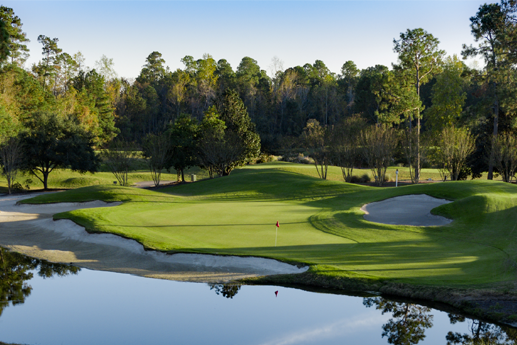Watching Colin Morikawa drive a short par 4 and make eagle to clinch the PGA Championship or seeing Bryson DeChambeau overwhelm Shinnecock Hills to win the U.S. Open makes us all dream of playing on the PGA Tour.
The exhilaration of winning, playing the world’s best courses, and the almost unfathomable wealth that accompanies golf stardom are just a few of the reasons life on Tour is so alluring, but for most that’s not the reality of being a professional golfer.
For every Dustin Johnson and Brooks Koepka who are assembling hall of fame careers, flying in private jets, and enjoying the perks of celebrity, there are countless golfers attempting to grind out a living in a game that is at least as cruel as it is exhilarating.
People like Yoshsio “Yosh” Yamamoto.
You likely don’t know Yosh (though you may have seen him at Myrtlewood Golf Club, where he works as an assistant pro and is a sought-after teacher), but he was one of golf’s one percenters. Yamamoto grew up in Guadalajara, Mexico, going to Club de Golf Santa Anita with his father, before going on to star at Austin Peay State University.
After a sterling collegiate career, he turned pro in 2008, beginning an eight-year odyssey that saw Yamamoto play on the PGA Tour Latin America, the Mexican Mini Tour, the Hooters Tour and to many others to list, all in hopes of earning a spot on the PGA Tour.
Yamamoto had a good professional career, winning more than a dozen times on various mini tours. He even played in the PGA Tour’s OHL Classic at Mayakoba in 2015, missing the cut after shooting 71-74 in an event Graeme McDowell went on to win.
Despite plenty of trophies on the mantle, Yamamoto’s story, like that of most professional golfers, stands in contrast to those you see on television, but he recalls his dream-chasing days fondly.
“It’s fun but it’s not as glamorous as a lot of people may think,” Yamamoto said of playing in golf’s minor leagues. “There is a lot of traveling and you are living out of a suitcase, so you don’t get to spend much time at home.”
He traveled up to 36 weeks a year, repeating a loop that saw him travel Monday, practice Tuesday, play a Pro-Am on Wednesday, and compete Thursday through Sunday.
A day later the process began anew, unless Yamamoto was attempting to play in a Monday qualifier. The regional mini tours often scheduled tournaments in close proximity to Korn Ferry Tour events, making things easier on everyone, but life on the Latin America Tour meant nonstop travel from one event to the next.
Yamamoto played in Mexico, Guatemala, El Salvador, Argentina, Peru and Columbia, among other nations. Sometimes the events were clustered, sometimes not, but either way, he tried to experience the culture of wherever he was playing, which provided the added benefit of taking his mind away from the course, even if only for a brief period of time.
The craziest stretch of Yamamoto’s career took him on a four-month journey.
“I left at the beginning of August, and I was only going to be gone for three weeks, playing twice on the Mexican Tour and then in an event in Portland,” he said. “Next thing you know, I didn’t come back until December 20 and I ended up playing in Latin America.”
Playing week after week keeps the dream of a life-changing victory alive, but, perversely, it can make the dogged pursuit of one’s goals more difficult. There is little time for serious practice as one grinding round blends into another, followed by a night in an unfamiliar hotel bed.
“I remember halfway through that stretch, I can tell you I was in 3 different countries, but I can’t really tell you what happened,” he said of the four-month journey. “I feel like I teed off on the first hole, and I was grinding it out to shoot a pair of 71s.”
Life on the road eventually took its toll on Yamamoto, who battled burnout in 2016, and he opted to retire and return to Myrtle Beach on a full time basis, where he could invest in an increasingly serious relationship and decompress.
He didn’t touch his clubs for nearly five months, and he certainly didn’t miss the anxiety that came with knowing that if he wasn’t practicing someone else was.
Yamamoto’s days of spending eight hours on the range (when he wasn’t traveling) are over, but his love of the game hasn’t waned. When he initially returned to the course, he expected to play at the level he enjoyed upon his retirement, but reality quickly set in.
“I have to sit back and say, ‘You can’t do the things you used to be able to do when you practiced 7-8 hours a day, 7 days a week,’” he said. “If I get into a rhythm where I play once a week, that’s when I play well. As soon as I stop, that’s when I shoot some rounds over par.”
(As an aside, what I wouldn’t give to be able say “that’s when I shoot some rounds over par.”)
Yamamoto, whose low round is 61, still gets the itch to play competitively but lacking the ability to club the ball 300+ yards off the tee puts him at a significant disadvantage.
“It’s hard to compete with the younger guys,” Yamamoto said. “I tell (people I play with here), I might be able to shoot 68 with you guys, but it’s not the same as playing on the mini tour and having to shoot 63. It’s a completely different game. For right now, I’ll stick to teaching and playing for fun.”
That’s a win for golfers at Myrtlewood, especially those who are looking for a lesson.






